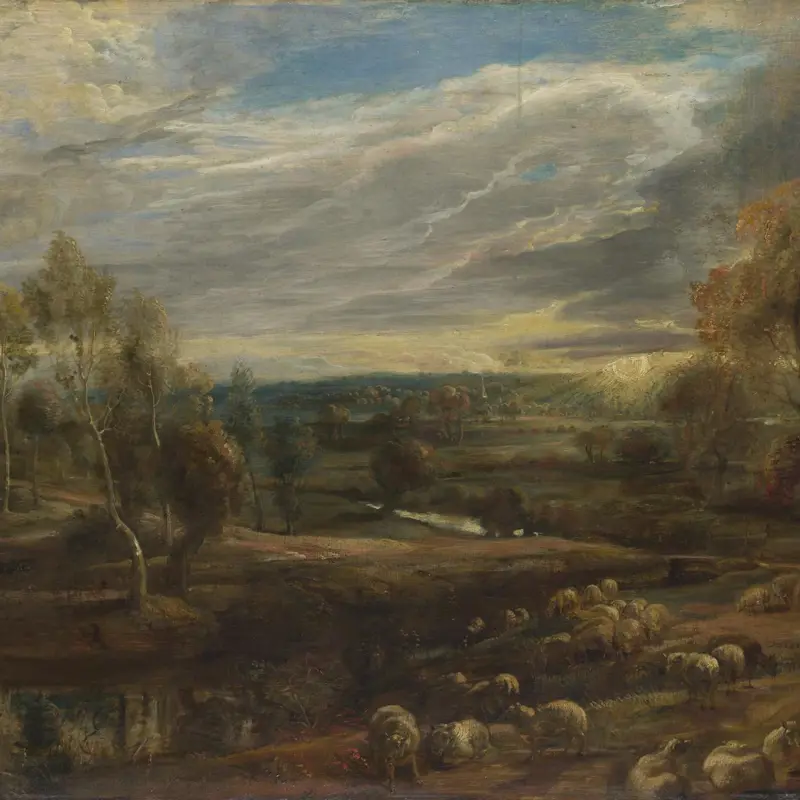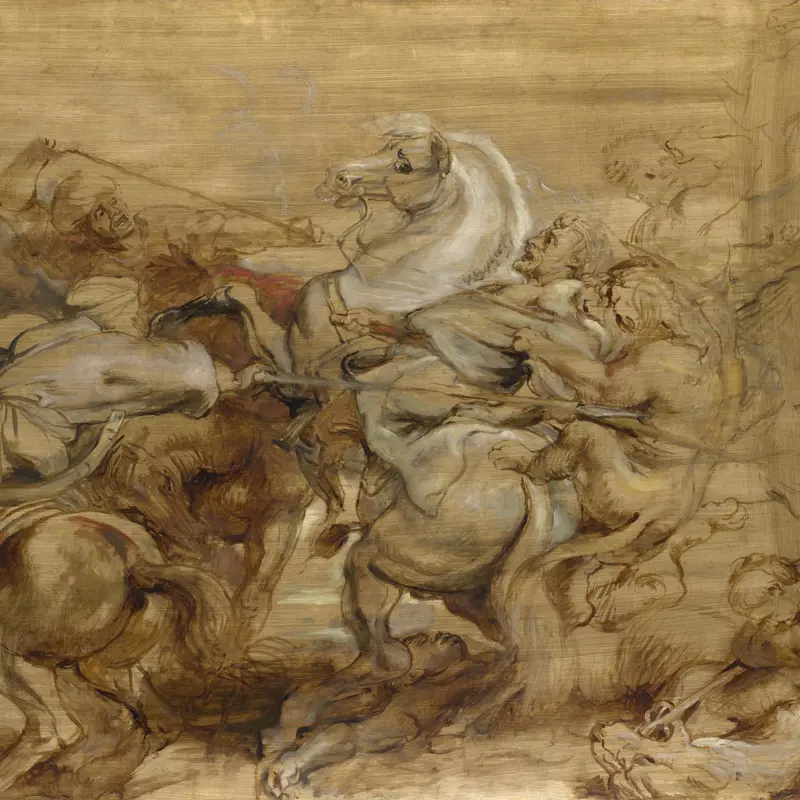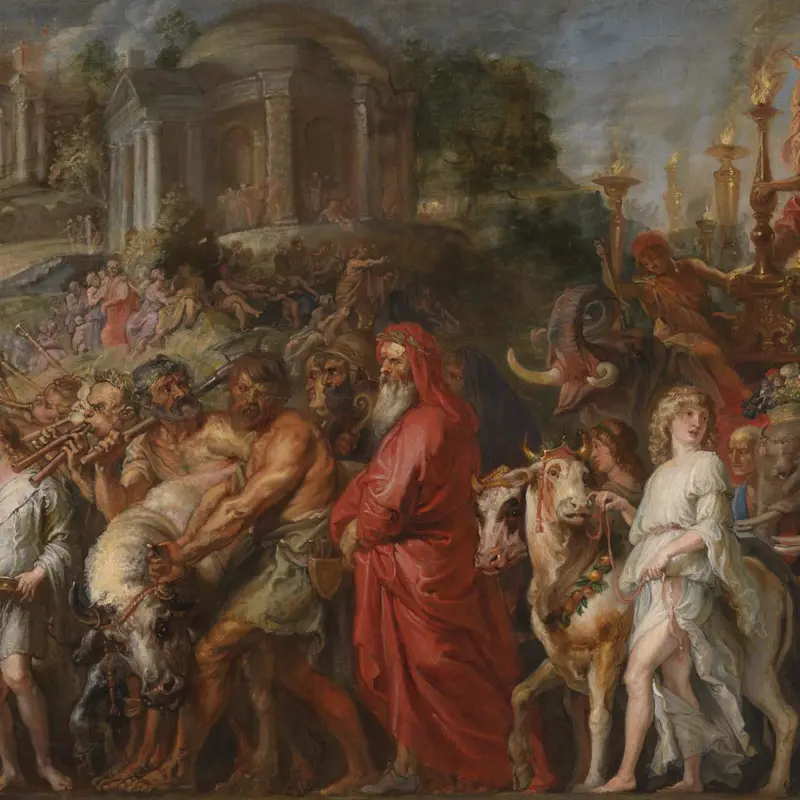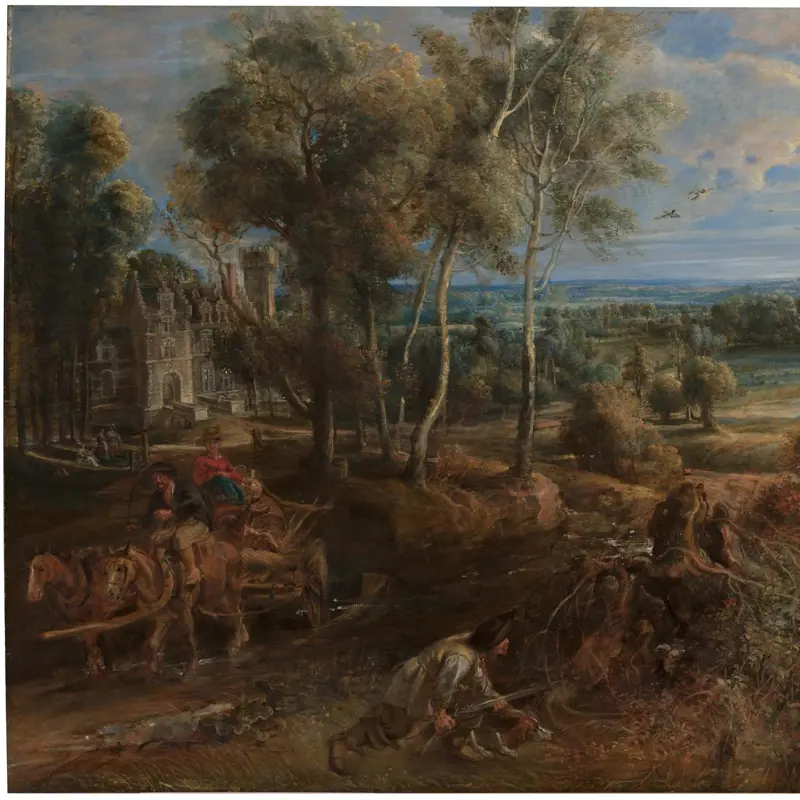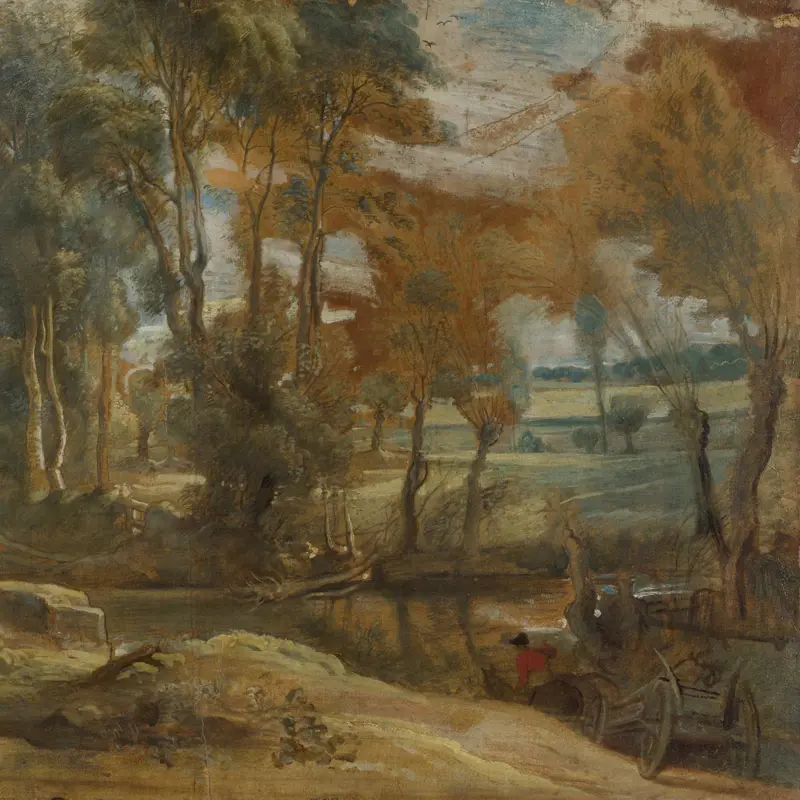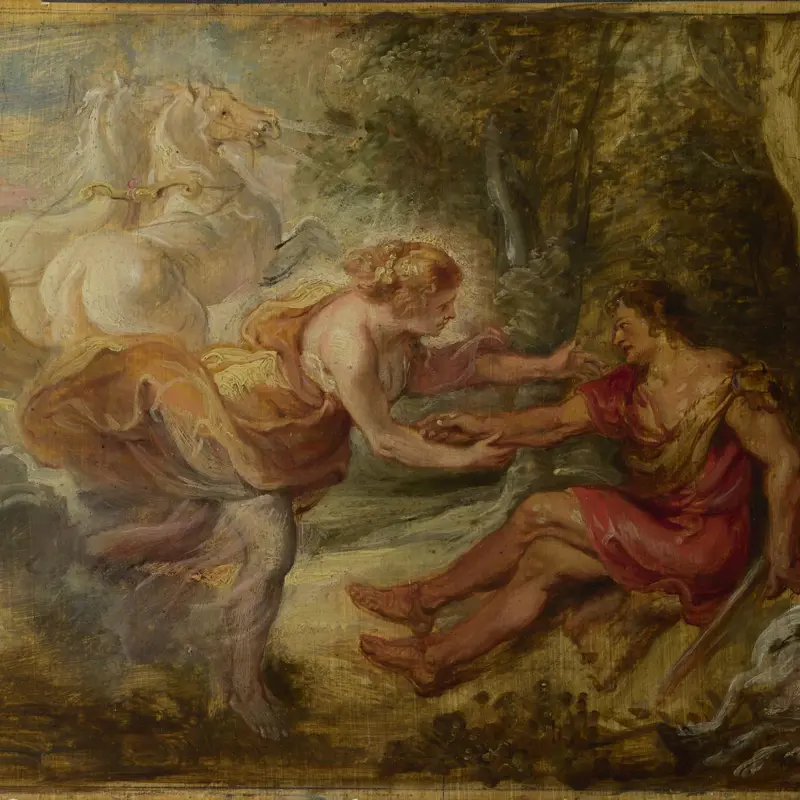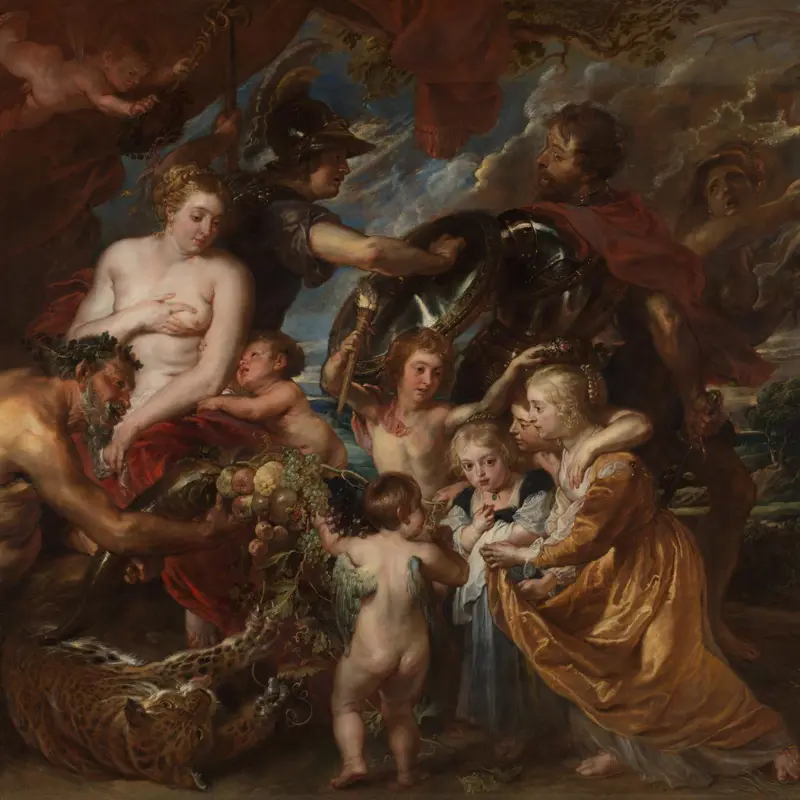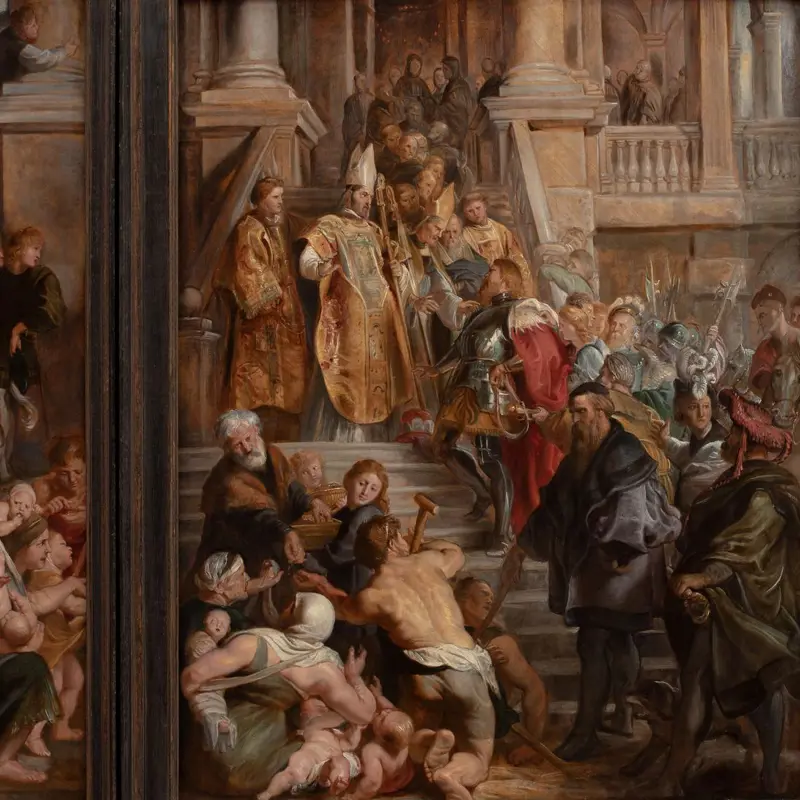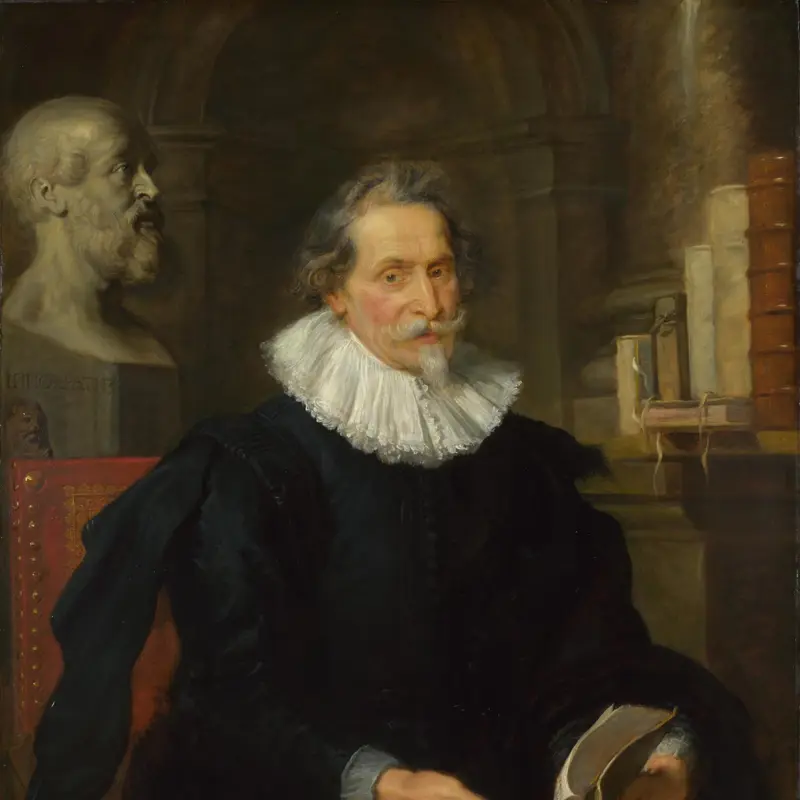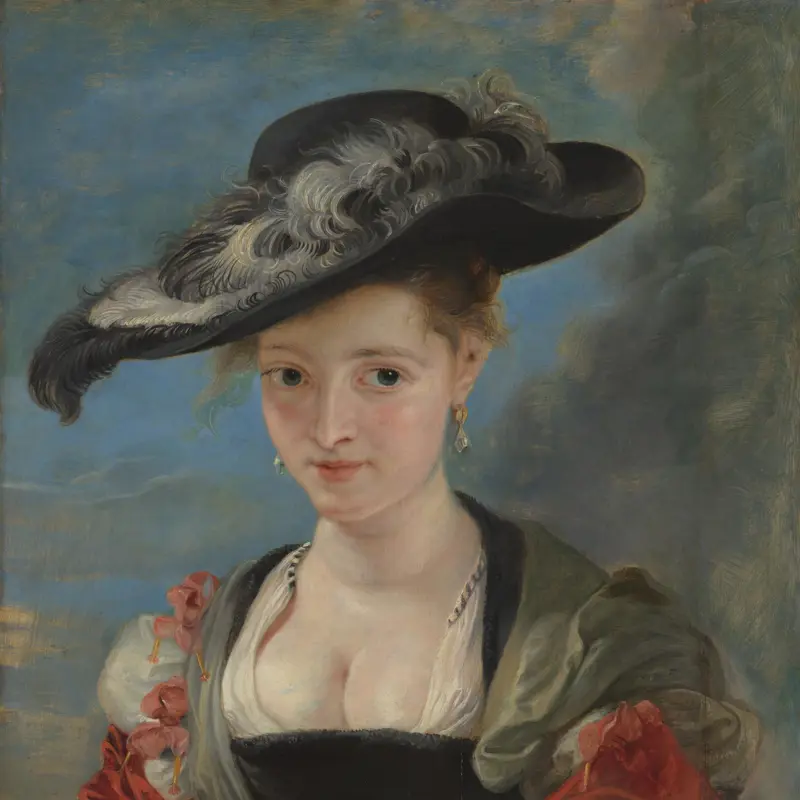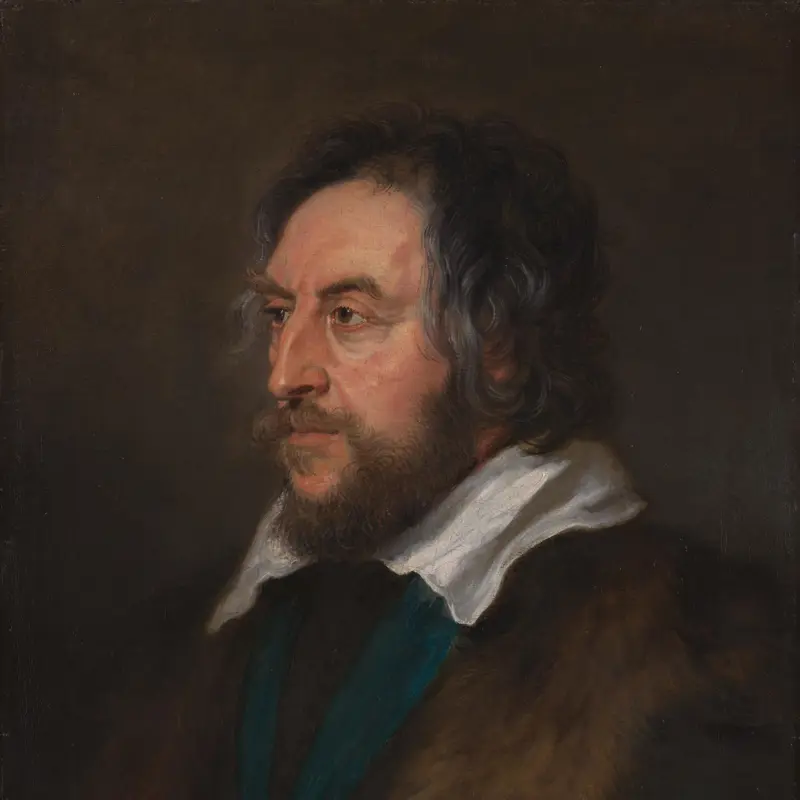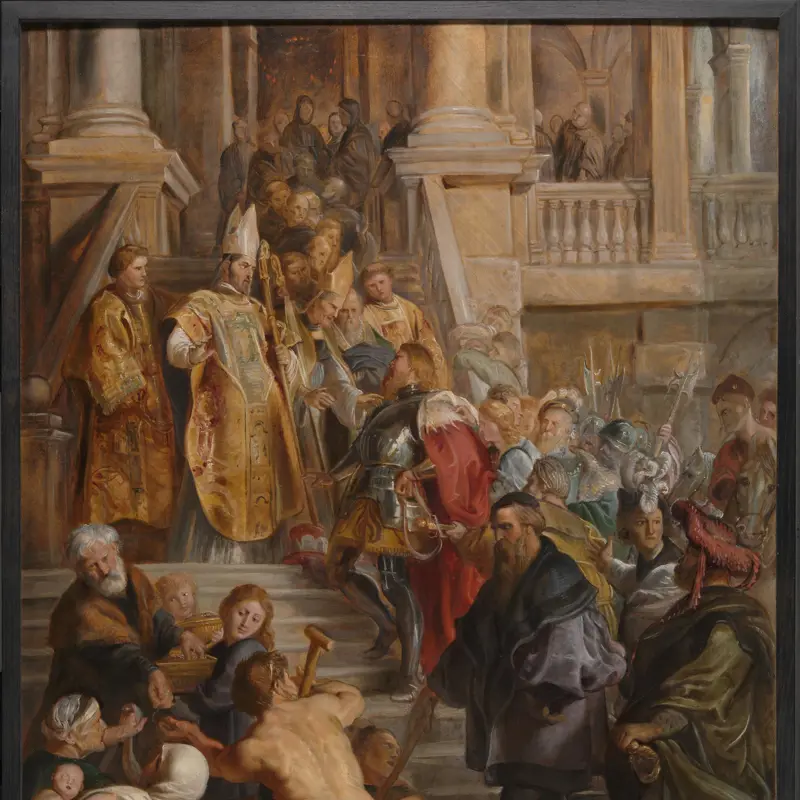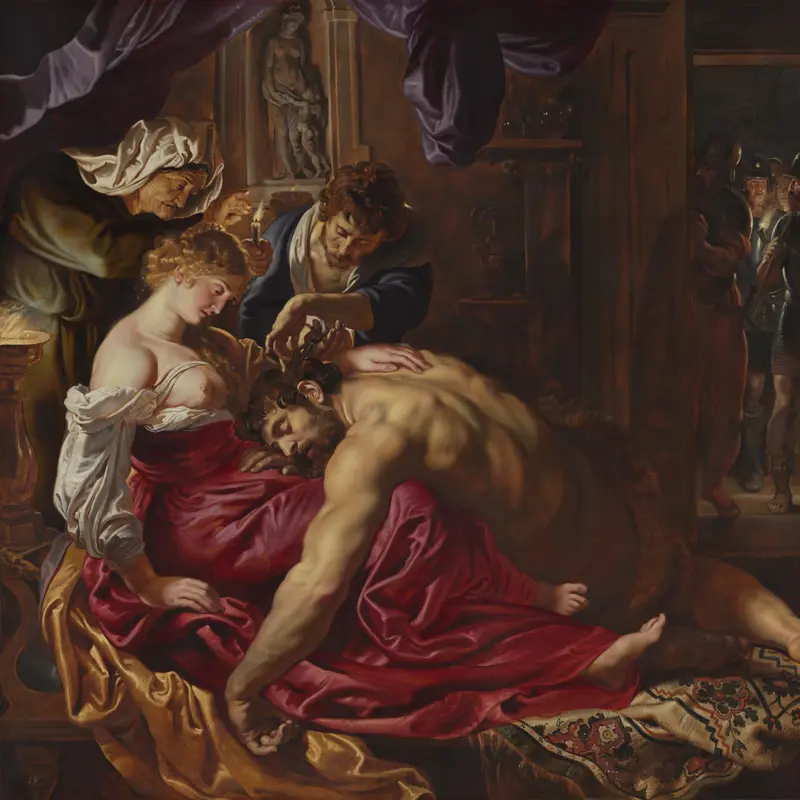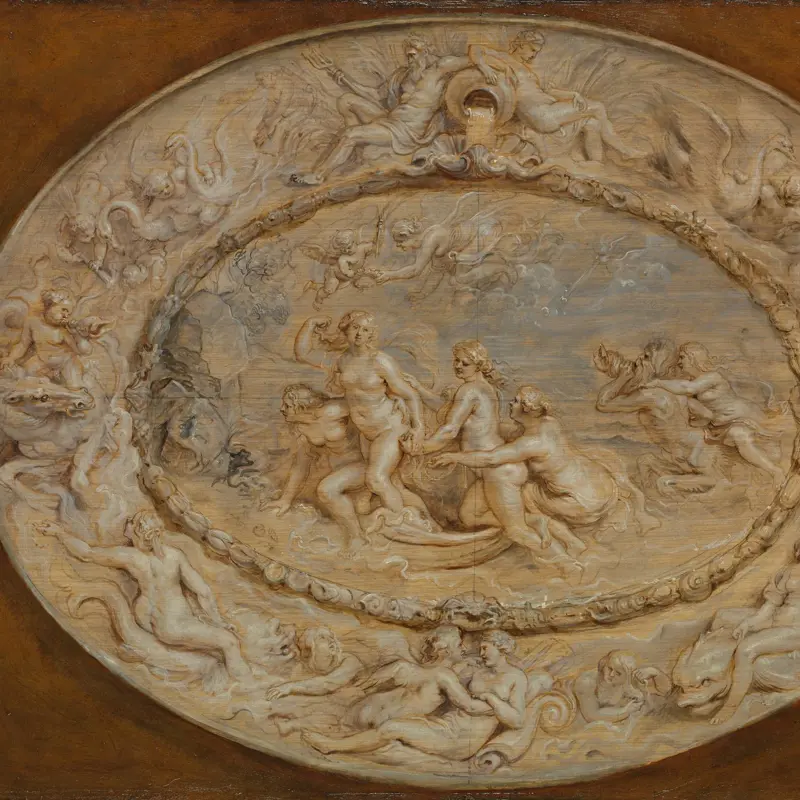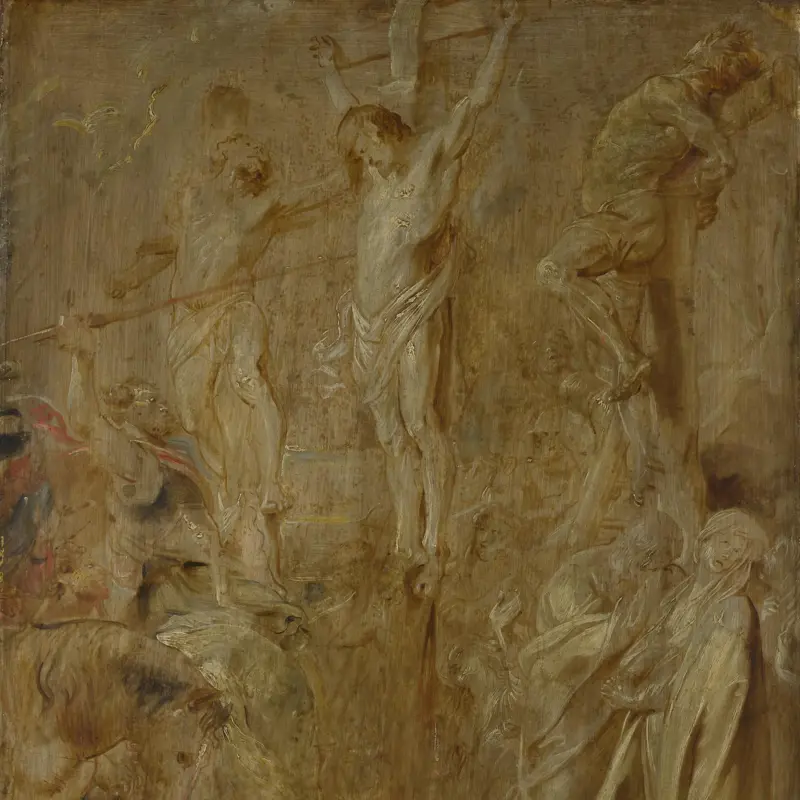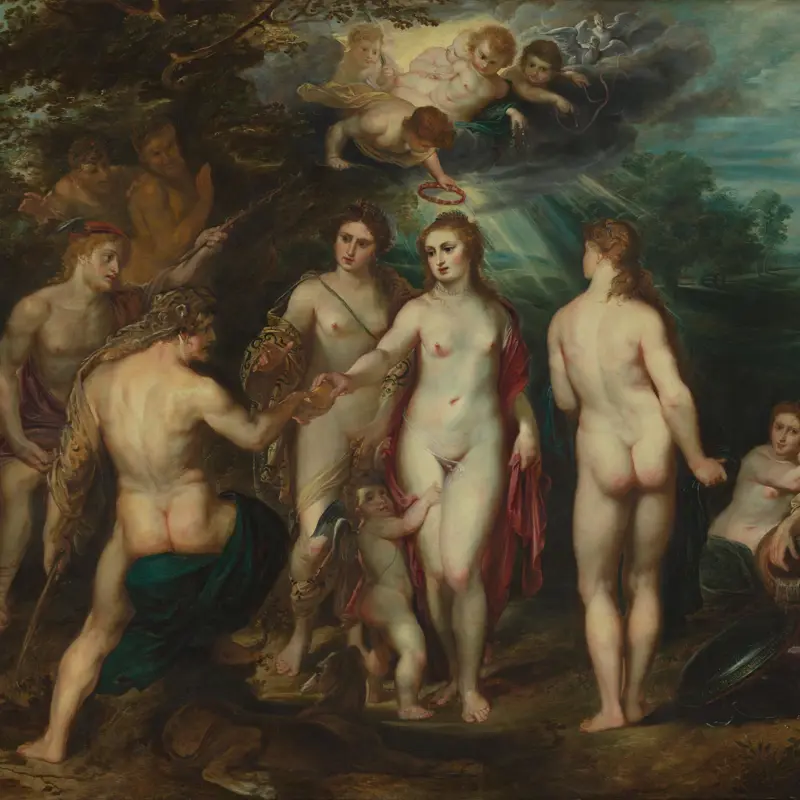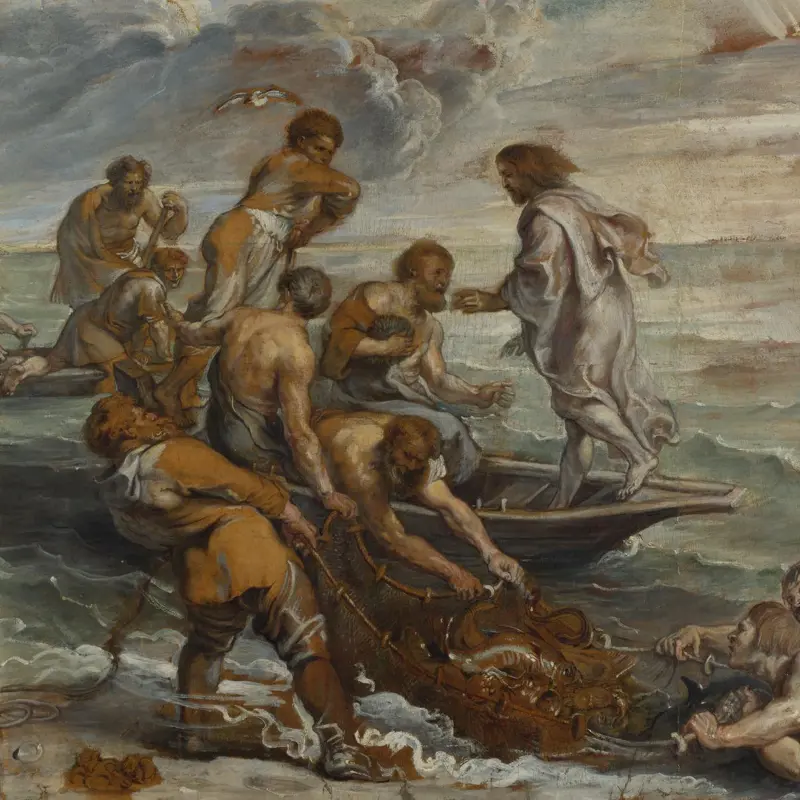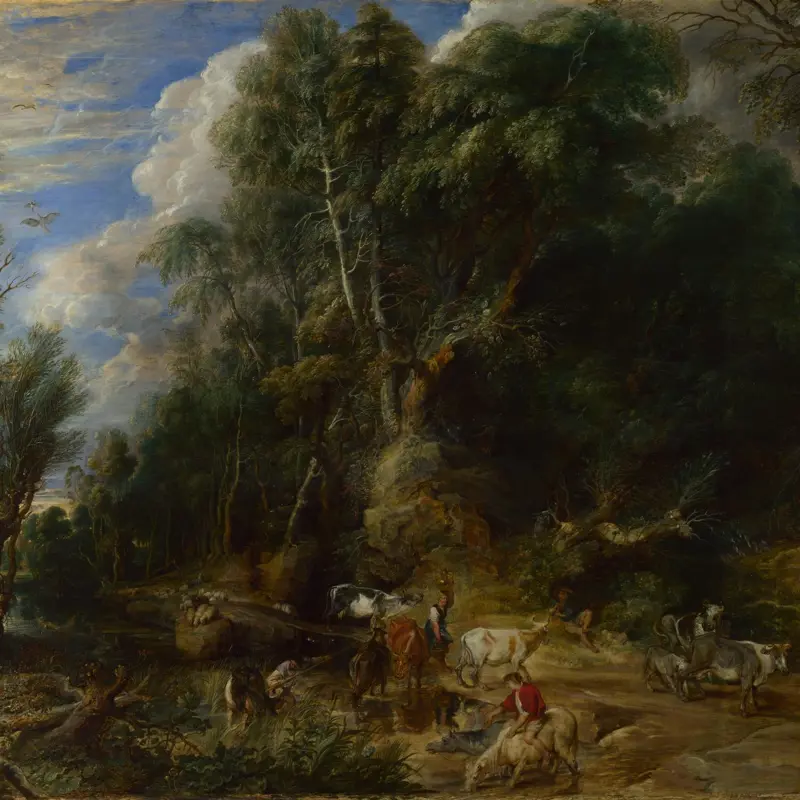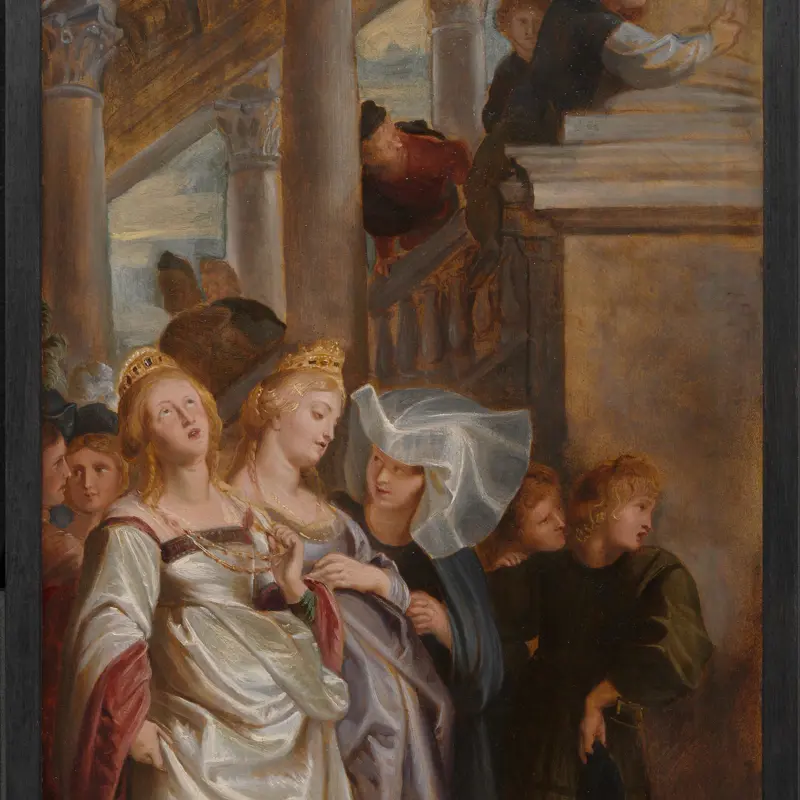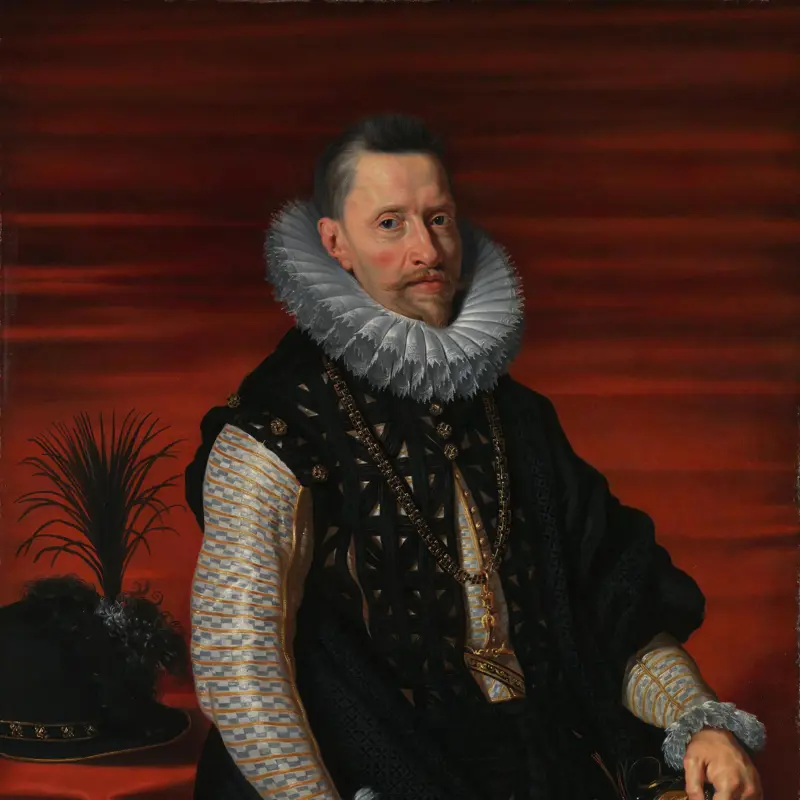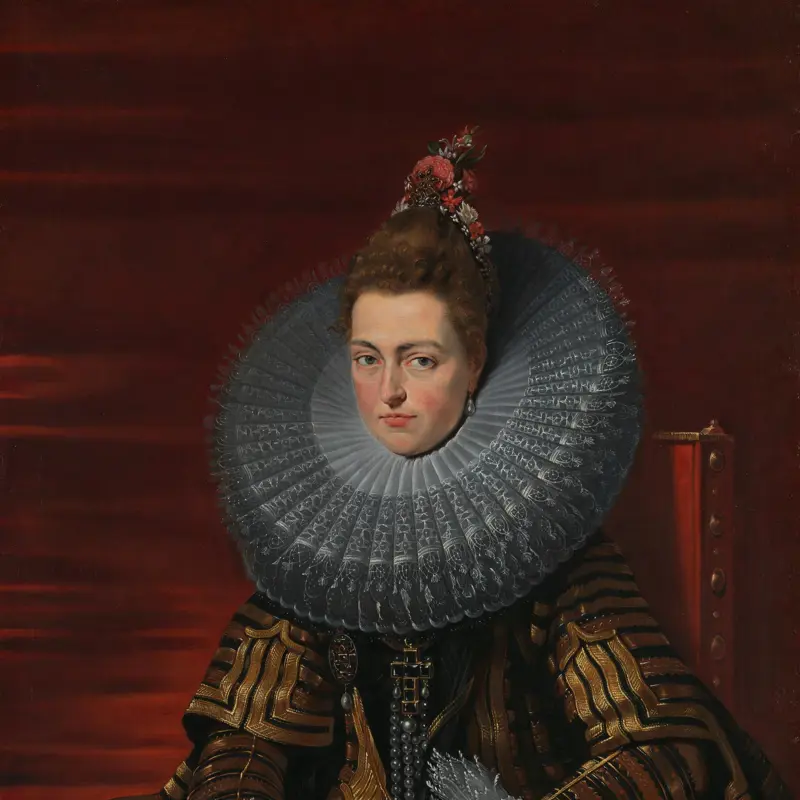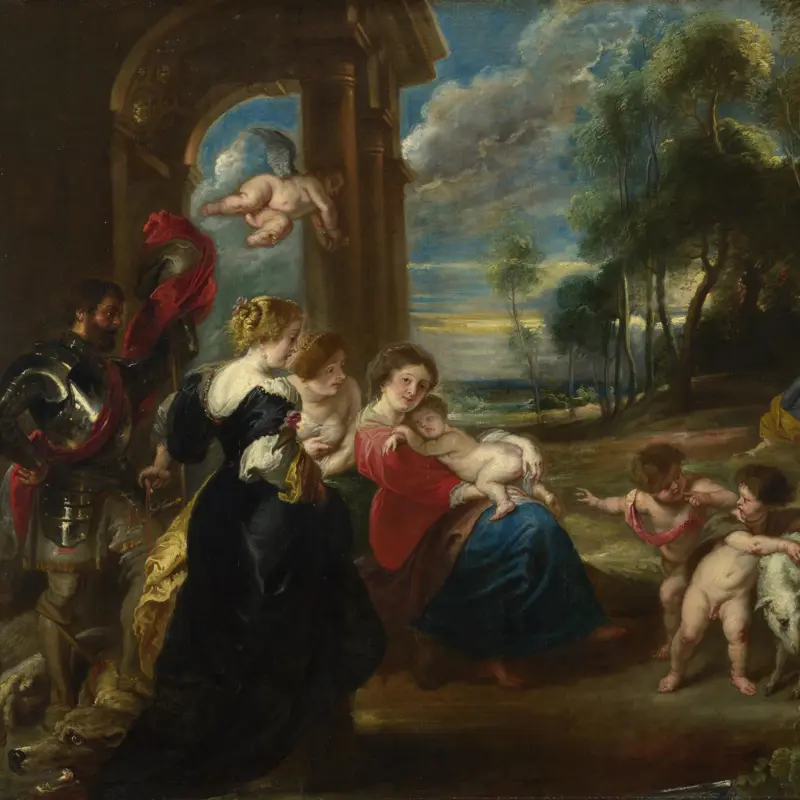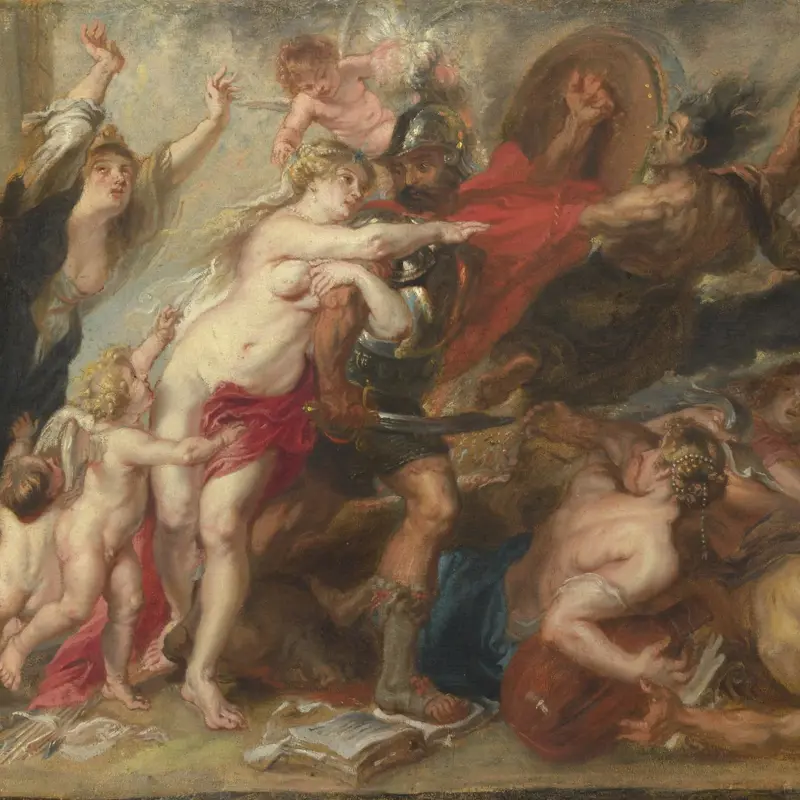Peter Paul Rubens, 'A Shepherd with his Flock in a Woody Landscape', probably 1615-22
About the work
Overview
We look down from a height on a rocky outcrop of ground surrounded by trees, their reflection caught in the tranquil stream drifting past. The woods are dark and dense but unthreatening. There’s a pathway through the undergrowth towards the light.
A shepherd leans on his crook, his flock beside him. Although the sun shines brightest on the sheep, it’s the glowing red of the boy’s jacket in the shadow that serves to brighten the whole picture, and which catches the eye first.
Rubens’s love of the natural world is shown in the meticulous, realistic detail with which he has painted the various textures – rocks and pebbles, shaggy wool, stringy blades of grass, water and myriad kinds of leaf. Many of his exquisite drawings still exist in the museums and galleries of the world, revealing to us his fascination and understanding of nature.
Key facts
Details
- Full title
- A Shepherd with his Flock in a Woody Landscape
- Artist
- Peter Paul Rubens
- Artist dates
- 1577 - 1640
- Date made
- Probably 1615-22
- Medium and support
- Oil on wood (probably oak)
- Dimensions
- 64.3 × 94.3 cm
- Acquisition credit
- Presented by Rosalind, Countess of Carlisle, 1913
- Inventory number
- NG2924
- Location
- Room 20
- Collection
- Main Collection
- Frame
- 17th-century Dutch Frame
Provenance
Additional information
Text extracted from the ‘Provenance’ section of the catalogue entry in Gregory Martin, ‘National Gallery Catalogues: The Flemish School: circa 1600–circa 1900’, London 1986; for further information, see the full catalogue entry.
Exhibition history
-
2017Rubens and RembrandtThe National Gallery (London)22 March 2017 - 6 August 2017
Bibliography
-
1829
J. Smith, A Catalogue Raisonné of the Works of the Most Eminent Dutch, Flemish, and French Painters: In Which is Included a Short Biographical Notice of the Artists, with a Copious Description of Their Principal Pictures […], 9 vols, London 1829-1842
-
1854G.F. Waagen, Treasures of Art in Great Britain: Being and Account of the Chief Collections of Paintings, Drawings, Sculptures, Illuminated Mss. […], vol. 2, trans. E. Eastlake, London 1854
-
1886M. Rooses, L'œuvre de P. P. Rubens: Histoire et description de ses tableaux et dessins, 5 vols, Antwerp 1886-92
-
1898J. Burckhardt, Erinnerungen aus Rubens, Basel 1898
-
1905A. Rosenberg, P. P. Rubens: Des Meisters Gemälde in 551 Abbildungen, ed. R. Oldenbourg, Stuttgart 1905
-
1909E. Dillon, Rubens, London 1909
-
1926E. Keiser, Die Rubenslandschaft, Rudolstadt 1926
-
1931E. Kieser, 'Tizians und Spaniens Einwirkungen auf die späten Landschaften des Rubens', Münchner Jahrbuch der Bildenden Kunst, VIII, 1931, pp. 281-91
-
1936A. Herrmann, Untersuchungen über die Landschaftsgemälde des Peter Paul Rubens, Berlin 1936
-
1936T. Borenius, 'Eine Rubenslandschaft für dee National Gallery', Pantheon, XVII, 1936, pp. 138-9
-
1936N. MacLaren, 'A Rubens Landscape for the National Gallery', The Burlington Magazine, LXVIII/398, 1936, pp. 207-13
-
1937J.A.G. Raczyński, Die flämische Landschaft vor Rubens, Frankfurt and Main 1937
-
1942H.G. Evers, Peter Paul Rubens, Munich 1942
-
1945G. Glück, Die Landschaften von P. P. Rubens, Vienna 1945
-
1963J.T. Hayes, 'Gainsborough and Rubens', Apollo, LXXVIII/18, August 1963, pp. 89-97
-
1969M. Jaffé, 'Rediscovered Oil Sketches by Rubens I', The Burlington Magazine, CXI/796, 1969, pp. 435-44
-
1970G. Martin, The Flemish School, circa 1600-circa 1900, London 1970
-
1980W. Adler, Jan Wildens: Der Landschaftsmitarbeiter des Rubens, Fridingen 1980
-
1982W. Adler, Landscapes and Hunting Scenes, Corpus Rubenianum Ludwig Burchard 18, vol. 1, Landscapes, London 1982
-
1982L. Vergara, Rubens and the Poetics of Landscape, New Haven 1982
-
1982C. Brown, A. Reeve and M. Wyld, 'Rubens' "The Watering Place"', National Gallery Technical Bulletin, VI, 1982, pp. 27-39
-
1983J. Mills and R. White, 'Pictures Cleaned and Restored in the Conservation Department of the National Gallery, January 1982 – December 1982', National Gallery Technical Bulletin, VII, 1983
-
1986Martin, Gregory, National Gallery Catalogues: The Flemish School, circa 1600 - circa 1900, London 1986
-
1987C. White, Peter Paul Rubens: Man and Artist, New Haven 1987
-
1988R.C. Cafritz, 'Netherlandish Reflections of the Venetian Tradition', in R.C. Cafritz, L. Gowing and D. Rosand, Places of Delight: The Pastoral Landscape, Washington 1988, pp. 112-30
-
1989M. Jaffé, Rubens: Catalogo completo, Milan 1989
-
1996O. von Simson, Peter Paul Rubens (1577-1640): Humanist, Maler und Diplomat, Mainz 1996
-
1996C. Brown, Rubens's Landscapes (exh. cat. The National Gallery, 16 October 1996 - 19 January 1997), London 1996
-
2001
C. Baker and T. Henry, The National Gallery: Complete Illustrated Catalogue, London 2001
-
2001H. Raupp, 'Rubens und das Pathos der Landschaft', in U. Heinen and A. Thieleman (eds.), Rubens Passioni: Kultur der Leidenschaft im Barock, Göttingen 2001, pp. 159-79
-
2004K. Renger, 'Rubens en navolgers', in H. Devisscher (ed.), De uitvinding van het landschap: Van Patinir tot Rubens 1520-1650, Antwerp 2004, pp. 71-6
-
2004H. Raupp, 'Rubens en de pathos van het landschap', in H. Devisscher (ed.), De uitvinding van het landschap: Van Patinir tot Rubens 1520-1650, Antwerp 2004, pp. 77-85
-
2008K. Jonckheere, The Auction of King William's Paintings, 1713: Elite International Art Trade at the End of the Dutch Golden, Amsterdam 2008
-
2009S. Brakensiek and M. Polfer, Graphik als Spiegel der Malerei: Meisterwerke der Reproduktionsgraphik 1500-1830, Luxembourg 2009
-
2014C. Kleinert, Peter Paul Rubens (1577-1640) and his Landscapes: Ideas on Nature and Art, Turnhout 2014
-
2016E. Bergvelt and M. Jonker, Dutch and Flemish Paintings: Dulwich Picture Gallery, London 2016
-
2016S. Bartilla, '[review] Peter Paul Rubens (1577 - 1640) and his Landscapes: Ideas on Nature and Art / Corina Kleinert', Journal für Kunstgeschichte, XX/3, 2016, pp. 238-49
-
2020L. Davis, Rubens: The Two Great Landscapes, London 2020
-
2020M. Bellanger and J.-P. Ovion, La collection du Duc d'Hostun-Tallard: Une passionnante chasse aux trésors des tableaux dispersés en 1756, Mercurol 2020
About this record
If you know more about this work or have spotted an error, please contact us. Please note that exhibition histories are listed from 2009 onwards. Bibliographies may not be complete; more comprehensive information is available in the National Gallery Library.

